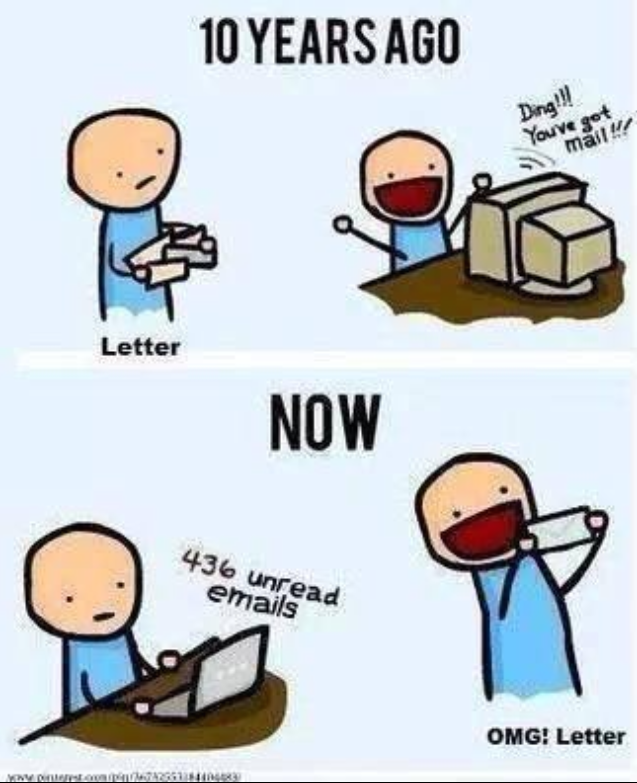It is not unusual for me to receive 50 emails in one day across both my work and personal email accounts, not to mention all of the “snail mail” received both in my work pigeon hole and personal post office box. On top of this “additional” paperwork, the amount of paperwork required for day-to-day consultations, hospital rounds, death certification, etc. seems to be growing by the year. This huge volume of paperwork serves to add some stress to my already time-poor days as a rural GP. There has certainly been a turn-around in the amount of snail mail versus email in the last 20 years, and sometimes it can be a nice change to receive a real letter, however it is more the large volume of material that concerns me!

It is almost getting to the point where I think I may need to schedule off additional time during my work day to read articles of interest in Australian Doctor, Medical Observer, Australian Family Physician, and other medical newspapers and journals, in addition to getting through non-consultation-based tasks like results checking, report writing, phone calls to patients and specialists, and completion of the multitude of forms required of us as GPs. A short Australian Doctor article from late 2013 highlighted these issues for GPs, adding that these tasks are not billable by Medicare, and are therefore effectively unpaid. Sadly, most of the papers and journals I receive end up in my recycling bin, simply because of their sheer volume piling up in my office, after months of not having had a chance to read them.

One morning’s pile of papers in GP
I do choose to do most of my consultation notes and correspondence via computer (rather than by hand), for several reasons. Firstly, I am much faster at typing than I am at writing. I have had multiple patients comment on my speed of touch typing whilst I am looking at them during a consultation. I was lucky in my timing at high school when typing (“practical information processing”) classes were taking shape, and I learnt to type properly to the point where I now don’t have to think about it. Secondly, electronic consultation notes and hospital admissions are not only easily legible (which is particularly important when doctors are renowned for having terrible hand-writing), but there is also a time- and person-stamp on the notes. In addition, if the admission note is written in the GP clinic software and then printed off for the hospital paper notes (which works best for rural GP clinics and hospitals), the notes are then available at the clinic as well as at the hospital, for ease of follow-up. This time- and person-stamping also works for emails; I find it reassuring to have a “paper trail” of emails which are easily searchable electronically if required in future.
 I would love to hear from other GPs regarding their methods of keeping up with all of the paperwork that comes across our desks and computer screens.
I would love to hear from other GPs regarding their methods of keeping up with all of the paperwork that comes across our desks and computer screens.
– Do you get time to read journals and medical news articles?
– Do you use Twitter to just skim the headlines?
– Do you set time aside during work hours for administrative tasks, or do you end up working through lunch, and late every night to keep up with it all?
– Do you prefer to type or hand-write your notes?
